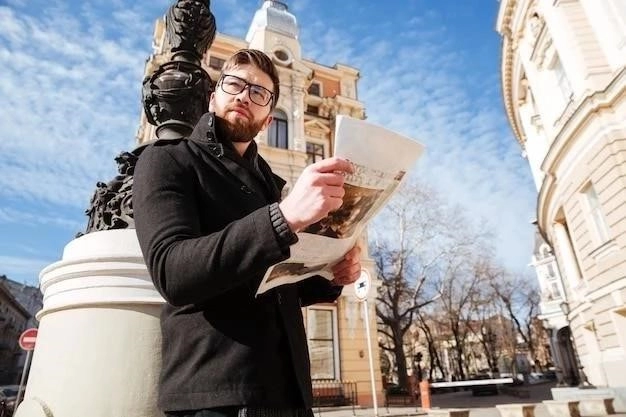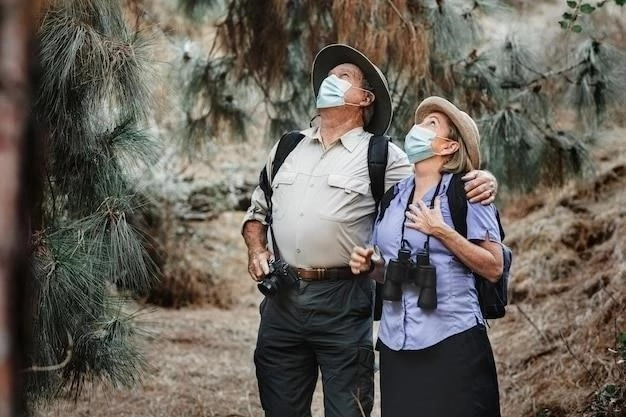Romania Travel Guide
Romania, a land of captivating landscapes, rich history, and vibrant culture, invites you to discover its hidden gems and create unforgettable memories.
1. Introduction
Nestled in the heart of southeastern Europe, Romania stands as a land of captivating contrasts, where ancient history intertwines with modern dynamism. From the snow-capped peaks of the Carpathian Mountains to the sun-kissed shores of the Black Sea, Romania’s diverse landscapes offer a breathtaking backdrop for exploration.
Journey through time as you wander through medieval castles, fortified towns, and ancient monasteries, each whispering tales of a rich and tumultuous past. Immerse yourself in the vibrant tapestry of Romanian culture, where centuries-old traditions are celebrated with passion and pride.
Whether you seek adventure in the great outdoors, a journey through history and culture, or simply a chance to relax and soak up the local charm, Romania promises an unforgettable experience. This comprehensive travel guide will serve as your companion, providing insights and practical information to help you plan your perfect Romanian adventure.
2. Best Time to Visit Romania
Romania’s continental climate graces the country with four distinct seasons, each offering a unique perspective on its natural beauty and cultural charm. The optimal time to embark on your Romanian adventure depends largely on your interests and desired experiences.
For those seeking pleasant weather and vibrant city life, spring (April-May) and autumn (September-October) present ideal conditions. During these shoulder seasons, temperatures hover comfortably between 15-25°C (59-77°F), making it a delight to explore bustling cities like Bucharest, Brasov, and Sibiu.
Summer (June-August) ushers in warm temperatures, reaching up to 30°C (86°F), perfect for basking on the shores of the Black Sea or embarking on hiking expeditions in the Carpathian Mountains. However, it’s worth noting that this is also peak tourist season, so expect larger crowds and higher prices.
Winter (December-February) transforms Romania into a winter wonderland, blanketing the Carpathian Mountains in pristine snow. Ski resorts like Poiana Brasov come alive with activity, while traditional Christmas markets enchant visitors with their festive spirit.
3. Top Tourist Destinations
Romania unfolds like a tapestry woven with threads of history, culture, and natural splendor, offering a wealth of captivating destinations for discerning travelers. From the vibrant capital city to the legendary region of Transylvania and beyond, Romania’s diverse tapestry promises an unforgettable journey of discovery.
Step back in time amidst the medieval charm of Transylvania, where fortified towns, Gothic castles, and ancient legends intertwine to create an aura of mystery and enchantment. Explore the vibrant city of Bucharest, a captivating blend of old-world charm and modern energy, with its wide boulevards, grand architecture, and bustling cultural scene.
Discover the painted monasteries of Bucovina, adorned with vibrant frescoes that stand as testaments to Romania’s rich artistic heritage. Embark on a scenic drive along the Transfagarasan Highway, renowned as one of the world’s most beautiful roads, winding through the heart of the Carpathian Mountains.
Whether you seek cultural immersion, natural wonders, or a glimpse into Romania’s captivating past, these top tourist destinations offer a glimpse into the country’s soul.

3.1. Bucharest

Bucharest, the vibrant capital of Romania, stands as a testament to the country’s rich history and dynamic present. Often referred to as the “Little Paris” of the East, Bucharest enchants visitors with its eclectic architecture, grand boulevards, and charming cafes.
Begin your exploration in the heart of the city at the Palace of Parliament, an architectural marvel and one of the world’s largest buildings. Stroll along Calea Victoriei, Bucharest’s most famous avenue, home to iconic landmarks like the Romanian Athenaeum, a masterpiece of neoclassical architecture, and the National Museum of Art of Romania, housing an impressive collection of Romanian and European art.

Immerse yourself in the bohemian ambiance of the Old Town, a labyrinthine network of cobblestone streets lined with charming cafes, antique shops, and vibrant bars. Discover hidden courtyards, admire the architectural tapestry of centuries past, and savor traditional Romanian cuisine at one of the many charming restaurants.
Bucharest offers a captivating blend of history, culture, and urban energy, inviting you to discover its many facets and create lasting memories.

3.2. Transylvania
Shrouded in legend and steeped in history, Transylvania is a region of unparalleled mystique and beauty. Its rolling hills, medieval castles, and ancient forests have captivated travelers for centuries, inspiring countless tales and legends.
No journey through Transylvania is complete without a visit to Bran Castle, perched dramatically atop a craggy hill. Known as Dracula’s Castle, this imposing fortress evokes images of Bram Stoker’s iconic vampire, though its historical significance extends far beyond literary lore.
Explore the medieval city of Sighisoara, a UNESCO World Heritage site and one of Europe’s best-preserved medieval citadels. Wander through its cobblestone streets, marvel at its colorful houses, and climb the Clock Tower for panoramic views of the city and surrounding countryside.
Transylvania’s charm lies not only in its castles and legends but also in its natural beauty. Hike through the Carpathian Mountains, explore the Turda Salt Mine, a subterranean wonderland of salt lakes and underground chambers, or simply savor the tranquility of the region’s idyllic villages.
3.3. Bucovina
Tucked away in northeastern Romania, Bucovina is a region of serene beauty and profound spirituality. Known for its painted monasteries, adorned with vibrant frescoes that depict biblical scenes and religious teachings, Bucovina offers a glimpse into Romania’s rich artistic and religious heritage.
Embark on a pilgrimage through Bucovina’s UNESCO World Heritage-listed monasteries, each a masterpiece of Byzantine art and architecture. Marvel at the intricate frescoes that adorn the exterior and interior walls, their vibrant colors and intricate details transporting you back in time.
Among the most renowned monasteries are Voronet, known as the “Sistine Chapel of the East” for its stunning blue frescoes, and Moldovita, celebrated for its vivid depiction of the Siege of Constantinople. Beyond their artistic significance, these monasteries offer a serene and contemplative atmosphere, inviting reflection and spiritual renewal.
Explore the rolling hills and verdant forests of the surrounding countryside, dotted with traditional villages where time seems to have stood still. Bucovina offers a sanctuary for the soul, a place to connect with Romania’s spiritual heart and immerse yourself in the tranquility of nature.
4. Romanian Culture and Cuisine
Romanian culture is a vibrant tapestry woven from ancient traditions, influences from neighboring cultures, and a deep-rooted sense of identity. From the lively rhythms of folk music and dance to the intricate craftsmanship of traditional crafts, Romanian culture offers a captivating glimpse into the soul of the nation.

Indulge in the flavors of Romanian cuisine, a hearty and flavorful blend of Slavic, Balkan, and Turkish influences. Sample traditional dishes like Sarmale (cabbage rolls filled with meat and rice), Mici (grilled minced meat rolls), and Mamaliga (cornmeal porridge), often accompanied by a dollop of sour cream and a side of pickled vegetables.
Engage with locals, known for their warm hospitality and welcoming nature. Participate in traditional festivals and celebrations, where vibrant costumes, lively music, and ancient rituals bring Romanian culture to life. Whether you’re exploring bustling cities or charming villages, embrace the opportunity to connect with the heart of Romanian culture.
5. Accommodation and Budget
Romania offers a wide range of accommodation options to suit every budget and preference, from luxurious hotels to charming guesthouses and budget-friendly hostels. In major cities like Bucharest, Brasov, and Cluj-Napoca, you’ll find an array of international hotel chains and boutique accommodations, providing modern amenities and comfortable lodgings.
For a more authentic experience, consider staying in a traditional guesthouse or pension, often family-run establishments that offer a glimpse into local life and warm hospitality. In rural areas, charming guesthouses and agro-tourism farms provide a tranquil escape, allowing you to immerse yourself in the beauty of the Romanian countryside.
Romania is a relatively affordable travel destination, offering excellent value for money. A reasonable daily budget would be between €30 and €60, covering accommodation, meals, transportation, and entrance fees to attractions. However, costs can vary depending on your travel style and preferences.
6. Transportation

Navigating Romania’s diverse landscapes is made accessible by a range of transportation options, each offering a unique perspective on the country’s beauty. For international arrivals, several international airports serve as gateways to Romania, including Henri Coandă International Airport (OTP) in Bucharest, Cluj-Napoca International Airport (CLJ), and Sibiu International Airport (SBH).
Within cities, public transportation systems, including buses, trams, and trolleybuses, offer convenient and affordable travel options. Bucharest, in particular, boasts an extensive metro network that efficiently connects various points of interest within the city.
For those seeking scenic journeys and greater flexibility, renting a car allows you to explore Romania’s picturesque countryside at your own pace. However, it’s essential to note that road conditions can vary, and driving in mountainous regions may require caution. Train travel in Romania, while offering a slower pace, provides a nostalgic and comfortable way to traverse longer distances and soak in the scenic beauty of the passing landscapes.
7. Travel Tips
To ensure a seamless and enriching journey through Romania, consider these practical travel tips to enhance your experience and navigate local customs with ease. The official language of Romania is Romanian, a Romance language with Latin roots. While English is widely spoken in tourist areas and larger cities, learning a few basic Romanian phrases will be greatly appreciated by locals.

Romania’s currency is the Romanian Leu (RON). Credit cards are widely accepted in urban areas, but it’s advisable to carry some local currency for smaller establishments, markets, and rural areas. When dining at restaurants, it’s customary to leave a tip of around 10% of the bill.
Pack for a variety of weather conditions, especially if you plan to explore different regions or travel during off-season months. Comfortable walking shoes are essential, as you’ll likely be doing a fair amount of exploring on foot. Embrace the opportunity to engage with locals, known for their warmth and hospitality. A little Romanian goes a long way, and even a few basic phrases will be met with smiles.
8. Conclusion
As you bid farewell to Romania, you’ll carry with you a treasure trove of unforgettable experiences. From the vibrant streets of Bucharest to the tranquil beauty of Bucovina’s painted monasteries, Romania’s tapestry of history, culture, and natural splendor will leave an enduring mark on your soul.
Whether you’ve wandered through medieval castles, traversed scenic mountain passes, or savored the flavors of traditional Romanian cuisine, your journey through Romania will have ignited a sense of wonder and a deeper appreciation for this captivating country.
As you reflect upon your Romanian adventure, let the warmth of Romanian hospitality, the echoes of ancient legends, and the breathtaking beauty of its landscapes inspire you to return and uncover more of its hidden gems. Romania awaits, ready to welcome you with open arms and create new memories that will last a lifetime.










